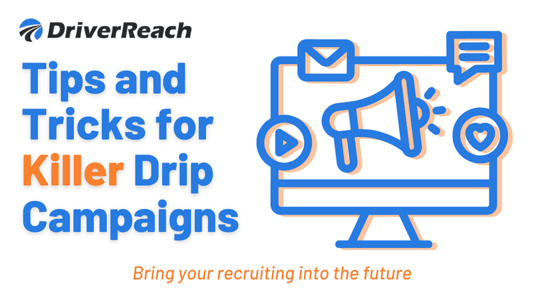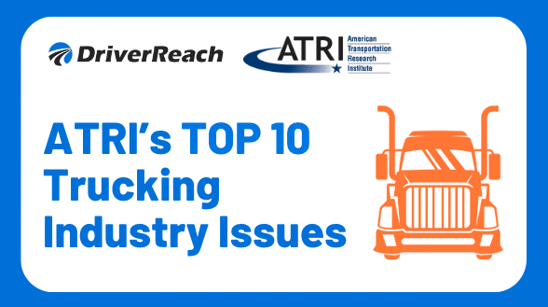Did you have a chance to attend webinar, “STREAMLINE & CUSTOMIZE: Creating a Winning Driver Orientation Strategy with Drive First”? We received more questions than we had time to answer in the allotted time frame, so our presenter from Luma, Scott Anderson, has answered them below in this Q&A-style blog post.If you weren’t able to join the live webinar, don’t worry – you can watch it on-demand anytime!
Question: Do you recommend training content based on role or experience?
Answer: We don’t recommend one way or another because each company has their own needs regarding how they want to individualize their orientation. What I can tell you is that most clients choose to release training content based on the role of the user (driver versus warehouse). However, we do have some clients who release content based on experience.
Question: You mentioned driver survey that 84% wanted content other than video, where did that data come from?
Answer: We track user behaviors in our system using analytics and we also poll them directly. For this specific statistic, we produced video-only content, and also put those same videos next to content in different formats (including text, illustrations, drag and drop gaming). We do this with different types of content to eliminate content dependency and continue to watch these stats overtime. These data were compiled and compared to determine that figure.
Question: Please comment on ongoing or continuous training, once the driver is onboard. We have high turnover; what frequency would you recommend to help retention?
Answer: This is a great question! We have clients that do both monthly and quarterly training, but monthly remedial training works very well with our clients. From a retention standpoint, it allows you to incorporate important company information into your training, or to tie rewards and/or bonus programs to training. There are other clear benefits to running a regular training program as well, such as reinforcing a culture of safety with your drivers, and showing your insurance company that you take driver education seriously.
Question: How do you solicit feedback from drivers following the on boarding process?
Answer: If a client is not already working with a company that specifically offers comparative surveys, we are able to create surveys on the spot within our assessment tool and to put them in the orientation at any point. We are also able to send those questions to the drivers after the fact. The DRIVE FIRST product also has ways of getting unsolicited feedback from drivers as well, which can be extremely valuable.
Question: We push some content to drivers prior to orientation, but often have to repeat or allow time when they come in for orientation; any suggestions or ideas?
Answer: The first step in learning is to have someone’s attention. How is the content presented? What would make your drivers want to engage in the content in the first place? Do you have their attention? How do you know?
Second, I would examine how much information you are pushing. Your working memory has a limit as to how much content it can bring in at one time. So, the amount of information you are pushing might be too much to process given the amount of information you want them to assimilate and length of time they have to process it.
What medium is the content in? Is it all text? Is it all video? Are they podcasts? Webinars? Are they long PDFs? Is it in one language? Remember, not all drivers have the same learning preferences. Try providing the content in different ways.
With all this said, Behavioral Learning research suggests that for an average learner with limited prior knowledge, it often will take up to seven times for that information to find its way into recallable, long-term memory. This is why it is important to have information that your drivers have trouble with presented before, during, and even after orientation.
If you presented information to them in a video before they come to orientation, mix up the way it is presented to them during orientation. For example, don’t just lecture on it again. Some adult learners learn best from discussion (peer-to-peer). Here is just one way of mixing it up. Set the expectation before they come to class that there will be a game and they should study the topics presented. Instead of lecturing the content to them when they come to class with a PowerPoint, put them in small groups. Create note cards for each group with the topics on one side. Have the groups discuss the topics and write down 2—3 important takeaways they would share about the topic with a future new driver. Have the groups share their takeaways and perhaps give points for all correct suggestions. You can make it a game and give away prizes. It can be fun. Something they will remember. They become active learners. The drivers will have read, listened, discussed, shared, and listened again. Your driver manager becomes a coach empowering the class.
Question: When engaging a company do you come in and see what a current orientation is like in order to help tailor a Luma based content being applied?
Answer: If the situation warrants it, we can do that. As a learning company, Luma has a very strong background in instructional design and has created award-winning programs that are both online as well as face to face. With that said, regular virtual meetings save time and money and, many times, are just as effective at assessing needs.
Question: What is the best success you've had with getting policy information to new hires coming through orientation?
Answer: As I hinted before, repetition is a valuable tool. Send the policy information to the drivers prior to orientation and build in assessments about them. Depending on the results of those assessments, cover those policies during your orientation as well. But most importantly, allow your drivers to review the policies after they leave orientation. If you incorporate periodic remedial training as well, feel free to throw in a refresher training on your policies too, or even a random true-false question (i.e. True or False: Our pet policy is….).
Question: How do you see virtual classroom training playing an active role in multi site onboarding experiences into the future?
Answer: Virtual classrooms are a form of what we would call synchronous online learning, and require all of your drivers to be online at a certain time together. Virtual classrooms have the potential to save time and money by not having to fly everyone to the same location for training. They can also be used to bring in content experts from all over the world. These tools have been used for decades in higher education.
As for all learning modalities, there can be challenges to synchronous learning, including technology (does the driver have a device that can facilitate it, and does the driver have the internet bandwidth to sustain an extended streaming service?), logistical issues (would all drivers be available at the same time? If not, are some feeling left out because they are not included?), and potential learning issues (will the trainers who use it be adequately engage drivers into the learning experience, or will it be more of a “sage on the stage” online lecture?).
Let me restate the learning question another way: Will the virtual classroom allow the learner to be an active participant, or will it only allow the learner to become a passive participant behind a computer screen?
This last question is one that this industry needs to critically look at as we move forward with this technology. We are working on our own virtual classroom and strategies for implementation to meet the needs of our clients. The key is to track the preferences of your own drivers. Just because you think it is a good idea, your drivers might not feel the same.
Question: Can you put a quiz after content to ensure the driver's are paying attention? I assume you already track if they try and skip or if they watch the content.
Answer: Yes, we can put a quiz in after the content. And we also are able to track time on task as well.
Stay up to date on CDL trucking trends! Be sure to check out the DriverReach blog or follow us on LinkedIn for other relevant articles and head over to our webinars page for an up-to-date list of upcoming events and on-demand recordings.
Interested in seeing DriverReach’s modern Recruiting Management System in action? Request a demo!







